While making the initial piping layout, have you ever come across a possible zig-zag layout as shown in below figure (A) and devised ways to make it a more acceptable regular rectangular pattern (B). But that’s not possible without changing the location of in/out nozzle and flow pattern of the heat-exchanger, isn’t it? So now we want to know if it is possible to change the nozzle location, orientation, or flow pattern of the heat exchanger.
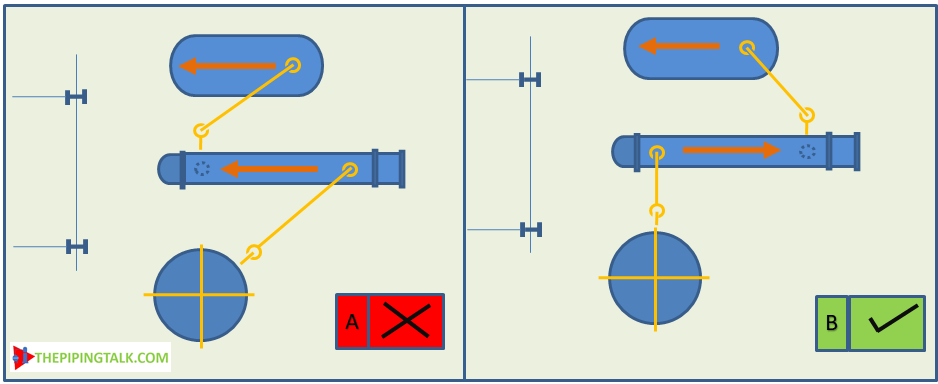
The answer is yes, it is possible. Early in the design/selection of heat exchangers, a piping engineer in discussion with the heat exchanger engineer/vendor can alter the heat exchanger design in some specific areas as noted below to have a batter piping layout.
- Changing the nozzle location by altering the direction of flow through the exchanger.
- Altering the orientation of heat exchanger nozzle and using elbow nozzle instead of straight one.
Anyway, what can be done with a simple piping altercation should not come at the cost of a more complex and costly change in the side of the heat exchanger.
Altering flow direction in a heat exchanger
To ascertain whether a request for change in fluid direction is possible, a thorough knowledge of the operation of the heat exchanger is required. In a heat exchanger, where there is a phase change of the flowing medium is anticipated (e.g condensation or vaporization) the heated media should flow upward and cooled media downward. For example-in a reboiler the process stream enters the reboiler at the bottom as liquid and leaves at the top as a vapor after flowing through the tubes. The steam that enters the shell near the top of the tubes leaves at the bottom of the shell as condensate. Similarly in a condenser, the process stream enters the shell at the top as a vapor and leaves the bottom as a liquid, while cooling water enters the tube side at the bottom and leaves at the top.
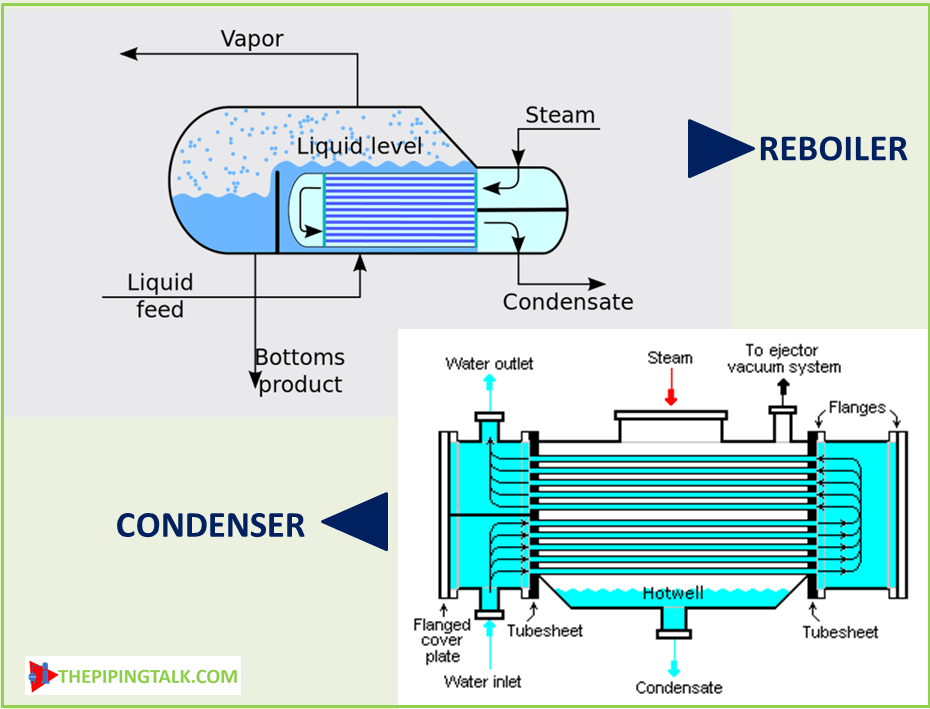
The above is mandatory where there is a change of phase and desirable when the steams are liquid, but unimportant when the steams are gas and vapor where there is no sub-cooling or superheating. Accordingly, the nozzle location can be changed after discussion with the mech heat exchanger engineer.
In the case of a single-shell/single-tube pass heat exchanger, the direction of flow for both fluids (but not just one) may be reversed without affecting the thermal performance of the heat exchanger. However, for 2-, 4-, or 6-tube pass/single-shell pass floating head heat exchangers, the direction of flow of either fluid may be reversed without affecting thermal performance. (see figure below )
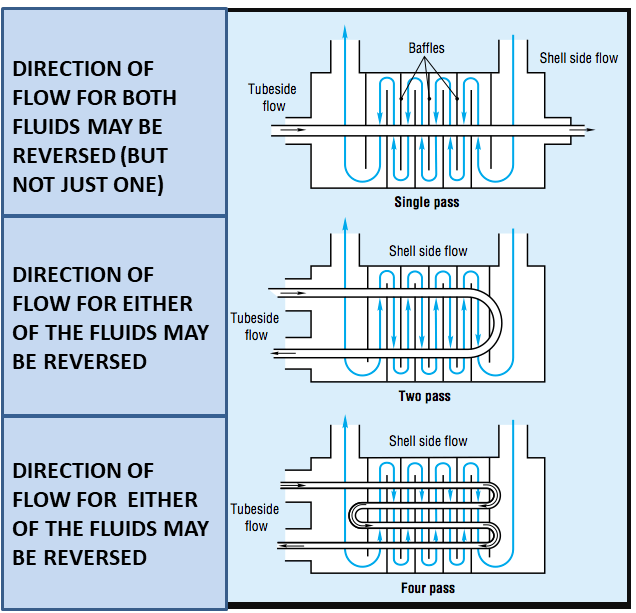
Adding elbow nozzle and orientating heat exchanger nozzle
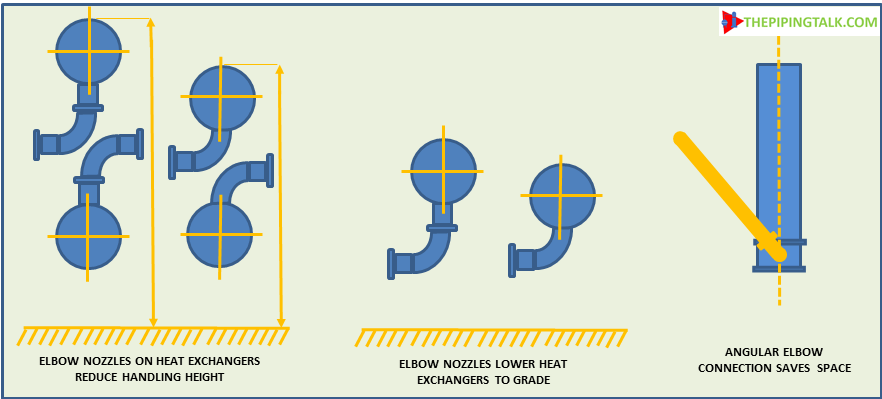
Elbow nozzles instead of straight nozzles, permit lowering of the heat exchanger to grade to have better accessibility to valves and instruments. The angular nozzle can save one or two bends in the pipeline minimizing pressure drop and it saves the much-required space. These measures can be employed in cases where there is a extreme demand to save space and cost or to meet any process requirement. Some examples can be seen in the below image.
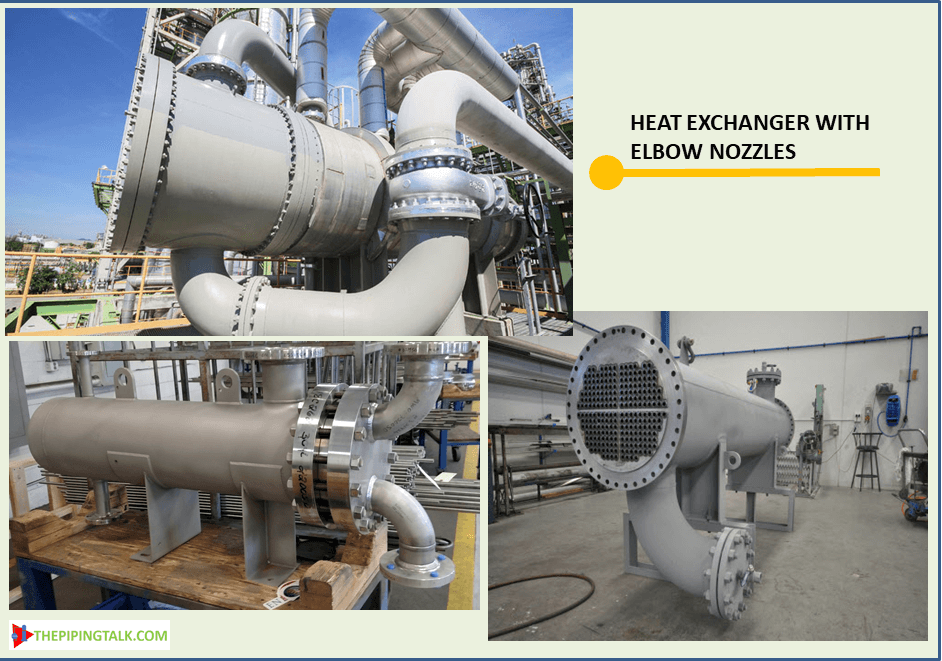
REFERENCES:
Sean Moran, 2nd edition,2017, Process plant layout, Butterworth-Heinemann, United Kingdom
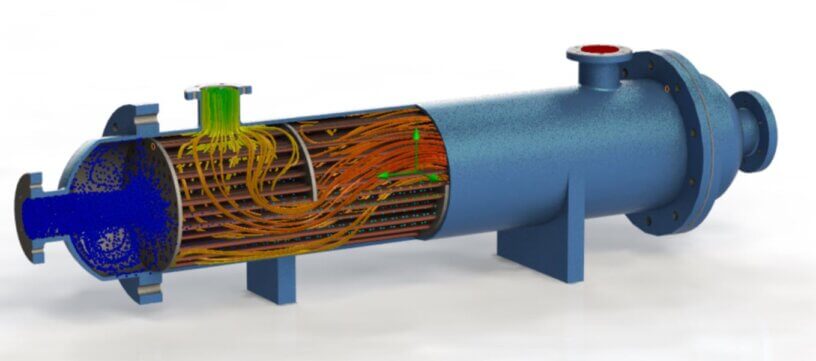
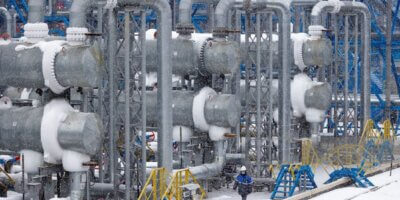
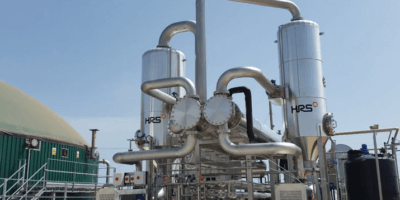
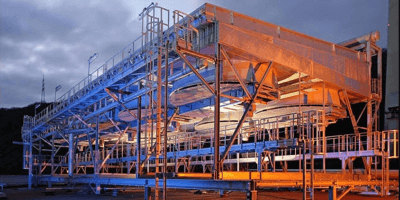
Leave a Reply